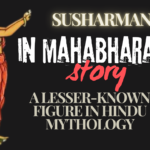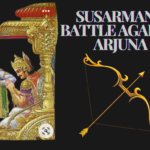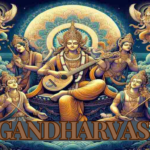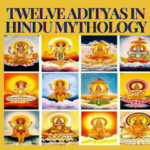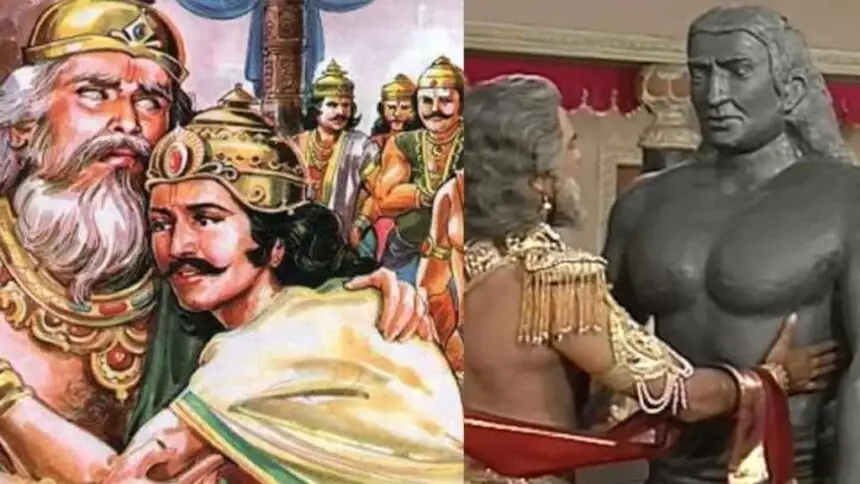The Mahabharata is a timeless epic filled with deep philosophical lessons, complex characters, and intense conflicts. Among the many fascinating tales, the enmity between Dhritarashtra, the blind king of Hastinapur, and Bhima, one of the Pandava brothers, stands out for its intensity and dramatic consequences. A question that often arises is: Did Dhritarashtra actually try to kill Bhima? The answer is a resounding yes. This article delves into the various incidents in the Mahabharata where Dhritarashtra’s rage towards Bhima reached a lethal point.
The Aftermath of the Kurukshetra War.
The Kurukshetra War, the central conflict of the Mahabharata, ended in the tragic demise of Dhritarashtra’s sons, including Duryodhana and Dushasana. The war left Dhritarashtra devastated, as he had lost all his sons. His grief, combined with his inability to accept the deaths of Duryodhana and Dushasana, fueled his deep hatred for Bhima.
Bhima’s Role in the Deaths of Duryodhana and Dushasana.
Bhima was directly responsible for the deaths of Dhritarashtra’s two most beloved sons. During the war, Bhima fulfilled his vow by killing Dushasana in a particularly gruesome manner. Bhima not only killed Dushasana but also drank his blood, a horrifying act that deeply wounded Dhritarashtra’s soul. Additionally, Bhima was instrumental in the death of Duryodhana, Dhritarashtra’s eldest son, further igniting the king’s fury.
Dhritarashtra’s First Attempt to Kill Bhima.
After the war, when the victorious Pandavas visited Hastinapur to seek the blessings of the elders, a significant incident occurred. Dhritarashtra, unable to contain his rage, attempted to kill Bhima during this encounter. Krishna, ever the protector of the Pandavas, intervened and saved Bhima in a clever manner.
The Iron Statue Incident.
In this dramatic episode, Krishna, aware of Dhritarashtra’s intentions, cleverly placed a metal statue in Bhima’s place. When Dhritarashtra, blinded by his anger and grief, went to embrace Bhima, he unknowingly crushed the iron statue instead. Dhritarashtra’s immense strength, fueled by his desire for revenge, shattered the statue into pieces, which gave the others a glimpse of his intense fury. This incident highlights Dhritarashtra’s uncontrollable rage and his desperate need for vengeance.
The Final Attempt by Dhritarashtra and Gandhari.
The tale doesn’t end there. After the war, and after the Pandavas had assumed power in Hastinapur, Dhritarashtra and his wife, Gandhari, made one last attempt to kill Bhima and Yudhishthira. This incident is often overshadowed by other events in the epic but remains a crucial part of the narrative.
The Failed Conspiracy.
After their return to Hastinapur, the Pandavas faced yet another threat from Dhritarashtra and Gandhari. Unable to reconcile with the deaths of their sons and driven by a deep desire for revenge, the royal couple plotted to kill both Bhima and Yudhishthira. However, their attempt ultimately failed, and the Pandavas, aware of the danger, took Dhritarashtra and Gandhari into custody. This marked the end of any further attempts on their lives.
Is Dhritarashtra good or bad?
Dhritrashtra was a terrible individual since he wasn’t mindful and on second thought of making the right decision, he generally decided to be driven by his feelings. His visual impairment was not his issue but rather his self deceiving nature and uncertainties were his shortcoming.
Did Dhritarashtra love Duryodhana?
It wasn’t so much that that Dhritarashtra needed warmth for his sibling Pandu’s children. The issue with Dhritarashtra was his affection towards his child Duryodhana, said Kidambi Narayanan in a talk. As a result of his extreme connection to his child, he didn’t really take a look at him, or overrule his off-base choices.
The Significance of These Events in the Mahabharata.
The episodes of Dhritarashtra’s attempts to kill Bhima underscore the intensity of emotions and the complex relationships in the Mahabharata. They illustrate the deep-rooted hatred and the tragic consequences of the war on the lives of all the characters involved. Dhritarashtra’s inability to accept the loss of his sons, coupled with his blind affection for them, drove him to commit actions that he might not have otherwise considered. These incidents also highlight the moral dilemmas faced by the characters, as they grapple with their duties, emotions, and the consequences of their actions.
The Role of Krishna as a Protector.
Krishna’s role in these events is also significant. As the protector and guide of the Pandavas, Krishna’s intervention saved Bhima’s life on more than one occasion. His foresight and wisdom were crucial in navigating the treacherous paths laid out by the complex relationships within the royal family.
Disclaimer : While Writing this post have taken some content reference from different blog posts around the web and also chatgpt. If you think I have directly copy paste your content ,please contact me . I assure you that I will remove the content within 24 hours.
